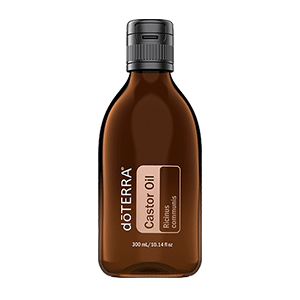Castor Oil Castor Oil (India)
- Category:
- Location:
- Date:
- Location:
- India
Picture sun-drenched fields in Gujarat, where castor plants sway gently in the warm breeze, their spiny seed pods glinting under the sun. Here, in the heart of India’s western plains, generations of farmers have cultivated castor as both a tradition and a livelihood.
From these resilient plants comes Castor Oil—thick, golden, and rich in its history and purpose.

Castor Oil Ricinus communis
doTERRA Castor Oil is a nourishing carrier oil that supports daily wellness and self-care routines.
Why Gujarat, India?
Purposeful Sourcing from the World’s Castor Capital
India is the world’s largest producer of castor oil, also known as the “gold oil of India.” Even more remarkable, over 80% of the world’s castor oil comes from smallholder Indian farmers, many of them working without mechanization yet producing a globally essential resource.
The region’s semi-arid climate, well-drained soil, and deep-rooted agricultural knowledge make it ideal for cultivating Ricinus communis, the plant from which our Castor Oil is derived. Castor has long been part of the local cropping system. Its cultivation supports thousands of smallholder farmers across the state.
How Does It Work?
Cultivation and Harvesting
The castor plant is a fast-growing shrub or small tree, typically reaching two to four meters high. It features thick, hollow stems—often tinged reddish purple—and large star-shaped leaves with up to 11 lobes.
The plant produces both male and female flowers on the same spike, and after flowering it forms round, spiny seed pods. Inside each pod are three shiny, mottled seeds—the source of the plant’s oil.
In Gujarat, castor is typically planted during the monsoon season (June–July), using either direct seeding or transplanting. What makes this crop especially valuable is its ability to thrive in rainfed conditions with little to no irrigation, making it perfectly suited for what are known as “marginal lands.” These are areas where the soil may be dry, less fertile, or not ideal for most crops.
Yet castor grows strong there, turning what could otherwise be underused land into a source of income and opportunity for local farmers. The plants begin to flower within 40–60 days, and the seed pods mature in about four to six months.
Harvesting occurs between December and February. Farmers handpick or cut the mature spikes, then sun-dry them before threshing to extract the seeds. Timing is critical—early harvests reduce oil yield, while late harvests risk seed loss from pods shattering.
It takes 450–500 seeds of the Ricinus communis plant to produce one 300 mL bottle of Castor Oil, and each plant can produce 1,000–1,200 seeds per growing cycle.
Once harvested and cleaned, the castor seeds are cold-pressed to extract the pale-yellow oil. This method preserves the oil’s natural properties. Unlike steam-distilled essential oils, Castor Oil is a thick, nutrient-rich product prized for its high ricinoleic acid content and readily used as a carrier oil for essential oils.
The historical versatility of castor oil has led to a wide range of applications. Cultivated for centuries in India, it now plays a vital role in clean beauty, green chemistry, and sustainable manufacturing. Today, it represents a powerful blend of ancient wisdom and modern innovation.
Empowering Local Communities
Turning Marginal Land into Meaningful Opportunity
Sourcing Castor Oil from Gujarat presents real challenges, but also meaningful progress. With most castor grown by smallholder farmers, ensuring consistent quality requires close collaboration, including field-level training and mentorship.
Though castor is drought-resistant, unpredictable weather like monsoons and heatwaves can still impact yields. Farmers are adopting adaptive practices like crop rotation and soil health management to build resilience into their fields.
With so many smallholder farmers, supporting quality practices across thousands of decentralized farms adds layers of complexity. Turning challenges into opportunities, this Indian castor supply chain is certified organic!
In Gujarat, castor cultivation has become a beacon of hope for thousands of smallholder farmers. Because the castor plant thrives on dry, less-fertile land—often considered unsuitable for other crops—it transforms the terrain into a potential source of income. The long harvesting season provides employment for rural laborers, while the oil’s processing and refining stages support local cooperatives and small enterprises.
Despite all the hurdles, the journey of Castor Oil from field to bottle is one of shared effort and innovation. Every drop reflects the dedication of farmers and sourcing partners working together to create lasting impact.


Comments
0 CommentsAdd to the conversation
Please login to comment
LoginWas this article helpful?